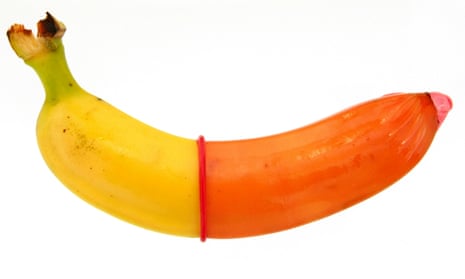Making condoms available to teenagers at school does not make them more promiscuous – but neither does it reduce teenage pregnancy rates.
According to a major review by the UN Population Fund (UNFPA), giving out condoms in secondary schools does not increase sexual activity, or encourage young people to have sex at an earlier age.
The research, thought to be the largest review of scientific literature on the issue, found that introducing condoms to schools reduced sexually transmitted infections (STIs).
The review recommended further investigation into the impact of school condom schemes on HIV and teenage pregnancies. Many of the studies were conducted in wealthy countries where such rates were already low, or where teenagers had access to other forms of birth control, researchers said.
The researchers concluded that once condom programmes are in place in schools, students use them – and that this improves sexual health. If such schemes were introduced in countries where students face a higher risk of HIV and early pregnancy, the benefits were likely to be even greater, said Bidia Deperthes, senior HIV prevention adviser for the UNFPA.
The number of adolescents living with HIV rose by a third between 2005 and 2016. Aids is the leading cause of death among young people aged 10-24 in Africa, and the second leading cause globally.
Fears that condom schemes will increase promiscuity are misplaced, the study added. In some cases, students with access to condoms at school reported having fewer sexual partners.

Experts hope the review, published in the Journal of Adolescent Health, will prompt more governments to introduce condoms in schools, as part of efforts to tackle high HIV, STIs and teenage pregnancy rates.
“We are struggling to [stop] the high increase of HIV among teenagers and mainly among girls,” said Deperthes. “Seven out of 10 young people who get infected happen to be a girl.”
Countries such as the Philippines have considered introducing condoms in schools, but faced opposition from religious leaders and parents.
“Policies can’t just be forced on to parents, on to communities, you need to be smart at it and engage in dialogue little by little to make changes,” said Deperthes. “Parental consent is very necessary, we’re talking about places where religion is very strong when it comes to teenagers having sexuality.”
The review looked at three measures to examine if condoms in schools promoted promiscuity: sexual activity, number of sexual partners and age of sexual initiation. It concluded that such programmes did not lead to an increase in the first two measures.
School condom programmes also did not encourage young people to have sex at an earlier age, according to the review, which included 29 articles from seven countries and was produced by the UNFPA and experts at Harvard and Yale universities.
Such programmes should be introduced alongside comprehensive sexuality education in schools, added Deperthes. “We found that when you make provision of condoms in schools, the impact on health outcome is even stronger,” she said. “Putting them in a corner and expecting it to do the job, is not going to happen.”
